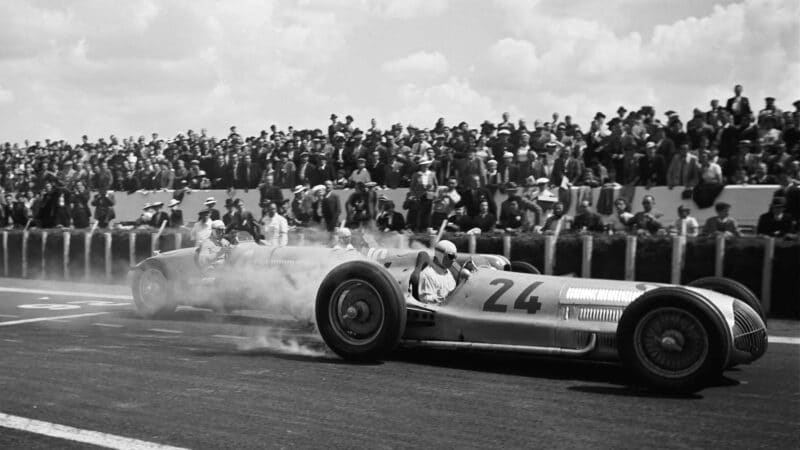The Mercedes W154: Engineering Brilliance of the Silver Arrows
Mike Blanchet, veteran engineer

Huge power, even if there wasn’t the grip to match. Rudolf Caracciola lights up the skinny tyres at the start of the 1938 French GP at Reims
Getty Images
The Silver Arrows Mercedes W154, at least the last three-litre V12 supercharged one, was so elemental with that great long bonnet and a massive steering wheel, that it has to be one of the greatest racing cars. It was a real brute, but sophisticated with it. I think this is what racing cars should look like, so exciting, and it must have made one hell of a spectacle. There is a good argument for stating that it was one of the first racing cars that was thought about scientifically. Before that it was pretty seat-of-the-pants and all a bit artisan. Mercedes really looked in to things like roll centres and cambers when it designed the car and it went in to great details and every aspect to come up with this extraordinary machine.
Driving those things around the Nordschleife must have been so exciting and hairy. The drivers had to have incredible brawn to get the best out of them. Of course you had to drive them within their own limits, but there was so much skill and energy needed just to keep those things on the track. And remember that the races then were usually three hours at least.
I think it was telling that Rudi Uhlenhaut was one of the designers on the W154. First and foremost he was an engineer, but by all accounts was as good if not better at driving than some of the regular pilots. But of course Rudolf Caracciola was the man, wasn’t he? Although Dick Seaman scored some good results, especially that win at the Nürburgring in 1938.
I count myself lucky to have seen some of these cars at Goodwood and so forth. Quite what they were like to see in period, raced by those heroes, is something I can only dream about.
